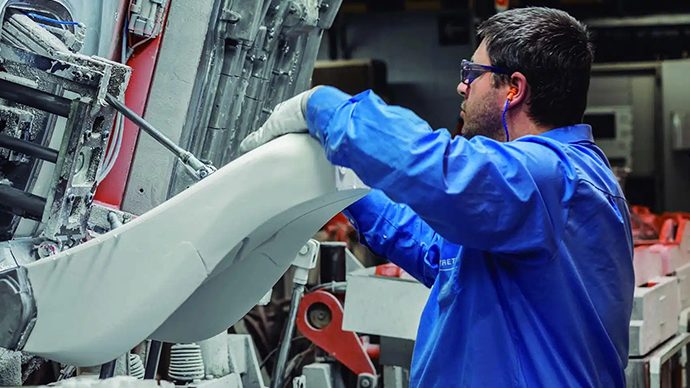RELEASE AGENTS AT THE SERVICE OF THE SECTOR THAT WORKS WITH HOT-CURING POLYURETHANE FOAM
The polyurethane intertwined polymer chains, creating products from very soft to completely rigid.
These polymers are formed from exothermic polymerization reactions of the two main components: Isocyanate and Polyol . When the reaction occurs inside a mold we speak of molded polyurethane. .
The great adhesive power of polyurethane is a great advantage in many of its applications, but also a drawback when removing the mold . . Mold release agents are products of vital importance in many industry sectors. The product forms a barrier between the mold and the surface of the molded part.
The action of the release agent is so important is so important that it is directly responsible for the appearance and surface properties of the piece once it is unmolded. It also has an impact on the production process, repairs, the dirt left in the mold and even the work environment.
Concentrol takes care to produce the appropriate release agent for each customer need, since there is no universal release agent and it must adapt to a large number of variables such as temperature, mold material and geometry, cycle time or the surface finish of the mold. The pieces.
One of the product families that Concentrol has is the release agent for hot curing flexible polyurethane foam.
Hot curing flexible polyurethane foam
With this production process, foams are produced for seats, backrests, and headrests for automobiles and other means of transportation such as airplanes, buses or trains. You can also make pieces for furniture and for the rest area.
This type of flexible foam production is obsolete, since it requires much higher energy consumption than cold curing. The molds, generally made of steel or aluminum , are heated to 160-180 °C.
The molds have, in most cases, a casting point through which the mixed components are introduced at high or low pressure. At this point in the process the temperature is between 30 and 40 °C. Once the molds are closed, they are placed in an oven at 180 °C through a rotating carousel. About 20 minutes pass between entering and leaving and 10 more for the rest of the journey.
When the mold comes out of the oven and is opened, it is close to 120 °C and continues the journey until, thanks to a mechanical air distribution system and thanks to the application of the release agent, the mold cools until the uncertain placement and casting is at 30 °C.
The release agents used allow correct curing in both steel and aluminum metal molds. When this is applied, diluted in water , the mold is above 100 °C, the water from the dilution intervenes by cooling the molds.
Generally, the finish of the pieces manufactured with this system has a closed-skin, small-pore finish. The Concentrol product also allows you to include a formulation in the release agent that gives it anti-noise properties , such as that which occurs when we move in a seat, whose foam is in contact with a metal structure.
The concentrate is applied with air-less systems, since the process temperature allows it; It is not necessary to add air to your application because the mold is at a temperature close to the boiling of water.


